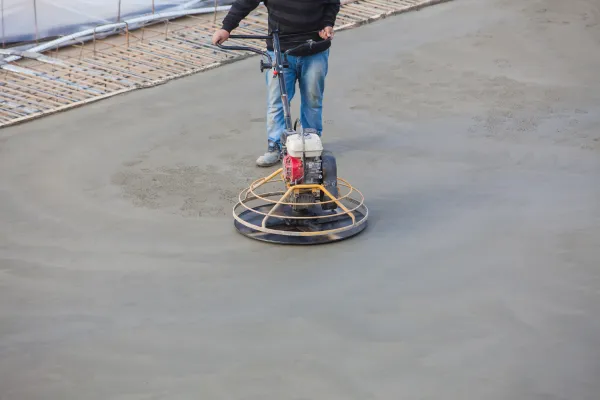
The Role of Concrete in Commercial Construction: Durability, Costs, and Benefits
Why Concrete Is the Backbone of Commercial Construction
Concrete has long been the unsung hero of commercial construction. Its unmatched strength, durability, and versatility make it the go-to material for everything from foundations to high-rise buildings. Unlike wood or steel, concrete can endure extreme weather, resist wear and tear, and provide a stable structure for decades. This reliability is why it's often referred to as the backbone of commercial construction. Furthermore, concrete’s ability to be molded into virtually any shape adds design flexibility that other materials can't match.
Types of Concrete Used in Commercial Builds
Not all concrete is created equal. Precast concrete is manufactured off-site and transported to the project location, making it ideal for speed and precision. Reinforced concrete, strengthened with steel bars or mesh, is designed to handle heavy loads and stress. Lightweight concrete, on the other hand, is used where reducing structural load is essential, such as in upper floors of buildings. The appropriate type of concrete depends on specific project requirements, site conditions, and architectural goals. For instance, high-performance concrete may be selected in areas with severe weather exposure or heavy traffic.
Cost vs. Durability Comparison
Upfront, concrete might seem more expensive than alternatives. However, when you factor in its longevity and low maintenance, it often proves more cost-effective in the long run. Concrete structures can last over 50 years with minimal repairs, reducing the total cost of ownership significantly. Additionally, because concrete is widely available and locally sourced, it offers a relatively stable cost in comparison to imported materials like steel, whose prices fluctuate with international demand and logistics.
Eco-Friendly Concrete Options
Sustainability is increasingly important in commercial construction. Thankfully, eco-friendly concrete options are available. Carbon-negative concrete technologies now allow concrete to absorb more CO2 than it emits, helping reduce overall emissions. Additionally, recycled aggregates from demolished buildings can be incorporated into new concrete mixes to minimize environmental impact. Fly ash and slag, byproducts of other industrial processes, are also commonly used as supplementary cementitious materials that enhance concrete performance while reducing waste. Organizations like the NRMCA offer valuable insights into sustainable concrete practices. This shift toward environmentally responsible construction methods is gaining traction across the industry, and our blog on The Importance of Sustainable Building Practices in Commercial Construction also explores how companies can implement these changes effectively.
Best Uses for Concrete in Commercial Buildings
Concrete's adaptability means it can be used in various structural and aesthetic roles including building foundations, parking structures, flooring and slabs, sidewalks and pathways, and decorative facades. Its versatility makes it essential for both functional and design aspects of commercial construction. Moreover, its acoustic insulation properties make it ideal for environments requiring noise control, such as hospitals and schools. Concrete also provides a clean, modern aesthetic that appeals to contemporary architectural styles.
How to Maintain Concrete Structures
Concrete requires some upkeep to remain in top shape. Sealing protects against moisture and chemicals that can damage the surface. Resurfacing renews old or damaged areas, while timely crack repair can prevent more significant structural issues from developing. A good maintenance routine can extend the life and appearance of concrete structures for decades. Regular inspections and early intervention help preserve the structural integrity, especially in regions with high humidity or freeze-thaw conditions.
Common Concrete Problems & How to Avoid Them
Despite its durability, concrete isn’t immune to problems. Cracking can result from drying shrinkage, overload, or thermal expansion. Surface scaling often occurs due to freeze-thaw cycles or poor finishing techniques. Discoloration may be the result of inconsistent mix ratios or curing practices. Preventing these issues starts with a well-designed mix, quality workmanship, and routine inspections. Using the right curing process is especially critical, as improper curing can severely weaken the final product.
How Concrete Enhances Fire Resistance
Concrete is inherently fire-resistant due to its non-combustible nature. It can withstand high temperatures without losing structural integrity, providing a critical safety benefit in commercial buildings. This makes it an excellent choice for fire-prone environments or buildings with strict fire codes. Additionally, concrete doesn’t emit toxic fumes when exposed to fire, enhancing overall building safety for occupants and first responders alike.
Innovations in Concrete Technology
The concrete industry is evolving with game-changing innovations. Self-healing concrete contains bacteria that activate to fill cracks when moisture is detected, reducing the need for manual repairs. 3D-printed concrete allows for faster, more efficient builds and can achieve complex geometries that are difficult with traditional methods. Other exciting developments include translucent concrete for aesthetic appeal and conductive concrete that can melt snow on sidewalks and driveways—further expanding the material’s applications in smart infrastructure.
Choosing the Right Concrete Contractor
Hiring the right contractor is key to a successful commercial concrete project. Here’s what to look for:
Proven experience with commercial builds
Transparent pricing and timelines
Strong portfolio and client references
Knowledge of local codes and regulations
A professional contractor ensures your project is completed safely, on time, and on budget. They also help navigate permitting processes and make informed decisions regarding materials and methods.
Why Concrete Remains the Cornerstone of Commercial Construction Success
Concrete is far more than just a basic building material; it’s a cornerstone of modern commercial construction. With its durability, cost efficiency, and ever-evolving technology, it remains an unbeatable choice for developers and builders alike. Choosing the right type of concrete and an experienced contractor can dramatically affect the success and longevity of a project.
Looking to start your next commercial construction project? Contact BTR Construction Grouptoday to learn how we can help you build stronger, smarter, and more sustainably. Call us at 469-243-4946 or visit our contact page to get started!